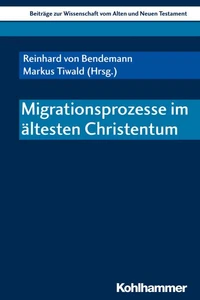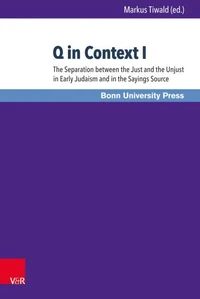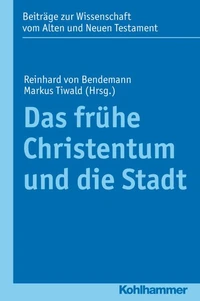Die Logienquelle. Text, Kontext, Theologie
Par :Formats :
Disponible dans votre compte client Decitre ou Furet du Nord dès validation de votre commande. Le format ePub est :
- Compatible avec une lecture sur My Vivlio (smartphone, tablette, ordinateur)
- Compatible avec une lecture sur liseuses Vivlio
- Pour les liseuses autres que Vivlio, vous devez utiliser le logiciel Adobe Digital Edition. Non compatible avec la lecture sur les liseuses Kindle, Remarkable et Sony
 , qui est-ce ?
, qui est-ce ?Notre partenaire de plateforme de lecture numérique où vous retrouverez l'ensemble de vos ebooks gratuitement
Pour en savoir plus sur nos ebooks, consultez notre aide en ligne ici
- Nombre de pages208
- FormatePub
- ISBN978-3-17-025629-3
- EAN9783170256293
- Date de parution14/09/2016
- Protection num.Digital Watermarking
- Taille3 Mo
- Infos supplémentairesepub
- ÉditeurKohlhammer
Résumé
The 'Q source' that served as a source for the Gospels of Matthew and Luke represents a double connecting link: on the one hand, the text needs to be situated between early Judaism and the beginnings of the Jesus movement - a document that focuses less on 'Christian' expectations than on eschatological hopes for salvation among Jewish disciples of Jesus. On the other hand, the text also serves as a bridge between the historical Jesus and later Christianity and provides insights into the early Jesus movement with a glimpse of archaic forms of Christology and ecclesiology.
In addition to issues of reconstruction of the text, which is only preserved indirectly, this volume is particularly concerned with the context of origin and the theology of the Q source - opening up a view of the period in which Jesus=s followers were still Jews.
In addition to issues of reconstruction of the text, which is only preserved indirectly, this volume is particularly concerned with the context of origin and the theology of the Q source - opening up a view of the period in which Jesus=s followers were still Jews.
The 'Q source' that served as a source for the Gospels of Matthew and Luke represents a double connecting link: on the one hand, the text needs to be situated between early Judaism and the beginnings of the Jesus movement - a document that focuses less on 'Christian' expectations than on eschatological hopes for salvation among Jewish disciples of Jesus. On the other hand, the text also serves as a bridge between the historical Jesus and later Christianity and provides insights into the early Jesus movement with a glimpse of archaic forms of Christology and ecclesiology.
In addition to issues of reconstruction of the text, which is only preserved indirectly, this volume is particularly concerned with the context of origin and the theology of the Q source - opening up a view of the period in which Jesus=s followers were still Jews.
In addition to issues of reconstruction of the text, which is only preserved indirectly, this volume is particularly concerned with the context of origin and the theology of the Q source - opening up a view of the period in which Jesus=s followers were still Jews.





